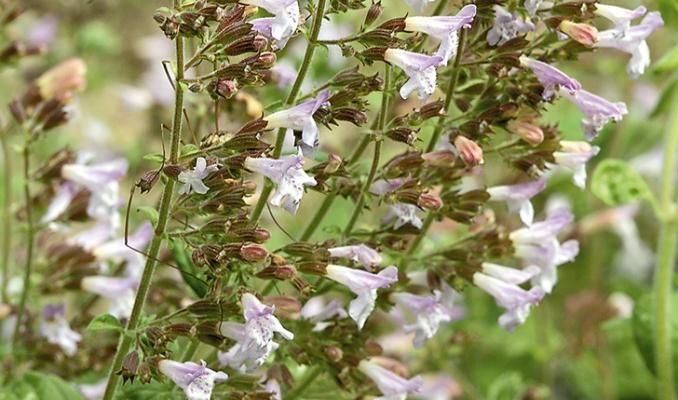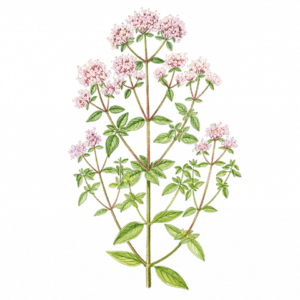
Find out more about the Oregano with compact inflorescences plant of our Aromatherapy Herbarium blog series.

OREGANO WITH COMPACT INFLORESCENCES
Origanum compactum
DESCRIPTION

Oregano (Origanum compactum), sometimes referred to as “wild marjoram”, is a perennial herbaceous plant growing to a height of thirty to sixty centimetres. It belongs to the Lamiaceae family, along with marjoram (Origanum marjorana), though it is not native to Asia like this latter.
ADVICE
Possessing a degree of toxicity, the essential oil must not be used for prolonged periods (never more than two weeks in a row). It is dermocaustic and must not be applied pure onto the skin. Even dilute, it should only be applied to small skin surfaces. It should not be diffused into ambient air, except at very low concentrations (less than 5%) and in combination with other essential oils.
DO NOT USE IN
– pregnant or breast-feeding women,
– children under the age of twelve years,
– persons allergic to one of the components (geraniol, linalool, limonene),
– subjects with asthma without the advice of an allergologist before the first use,
– subjects with epilepsy,
– persons with a history of gastritis, peptic ulcer, viral hepatitis B, C or D.
RECIPES
Bacterial diarrhoea
Pour 2 drops of essential oil of compact oregano onto a neutral tablet or sugar cube. Take two to three times daily for five days. (suitable for adults and children over the age of fifteen years only).
Tiredness
Swallow 2 drops of essential oil of oregano in a teaspoon of olive oil, on a sugar cube or neutral tablet, two to three times per day for three to four days.

Growing spontaneously in Mediterranean areas (Spain, Morocco), its stems are hairy and its leaves are pointed and slightly dentate. Its flowers are grouped in compact and fragrant pinkish to red inflorescences. The name oregano comes from two Greek words meaning “mountain finery”. A tablet discovered in the Mycenaean palace of Pylos reveals that, during the 13Ith century BC, oregano-scented oil offerings were made to divinities and their priests. It was used in infusions, unctions and plasters to heal numerous ailments. Dioscorides prescribed it to persons with stomach ailments and with “acidic and unpleasant belches”. It had a special place in Roman cuisine, in which it was reputed to facilitate digestion. In popular medicine, oregano leaves were used to prepare an anti-rheumatism herbal tea. The dried and chopped leaves were used as snuff, for freeing blocked noses and to create plasters for stiff necks.
CULTIVATION AND PRODUCTION
Oregano with compact inflorescences is native to Morocco.
FRAGRANCE
The odour of oregano is heavy, pungent and spiced.
EXTRACTION AND YIELD
Distillation of the flowering tops by steam distillation gives essential oil of oregano, with a yield of 1 to 2%, i.e. one to two kilograms of essential oil from one hundred kilograms of plant.
CHEMICAL FORMULA
The main active constituents of essential oil of oregano are monoterpene phenols (carvacrol mainly, along with thymol), monoterpenes (alpha and beta-pinenes) and monoterpenols (linalool, monoterpenes).
MAIN INDICATIONS
The exceptional antibacterial properties of essential oil of oregano make it a major natural anti-infectious agent that presents the considerable advantage of not inducing bacterial resistance and not irritating the intestine. It is both antibacterial, antiviral, antifungal and anti-parasite.
Diarrhoea, cystitis, pharyngitis, bronchitis, mycosis, etc.; Staphylococcus epidermidis or Staphylococcus aureus, streptococci, pneumococci, enterococci, Proteus, Escherichia coli, Candida, etc.: few infections are able to resist! Thanks to its energising and soothing action, it is recommended in the event of hard times or blows.


Leave a Comment